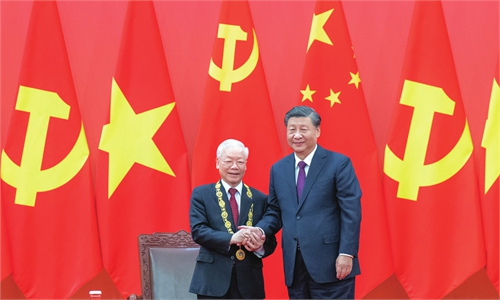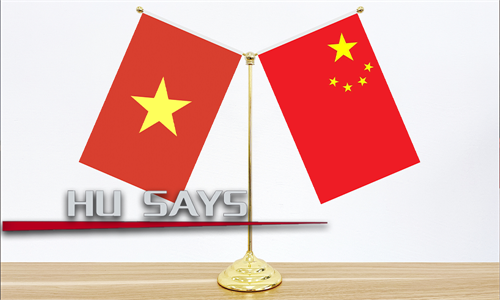Standard-gauge Railway to connect Vietnam with Eurasia market via China and boost Trans-Asian railway development
Planned standard-gauge railway to bolster China-Vietnam trade
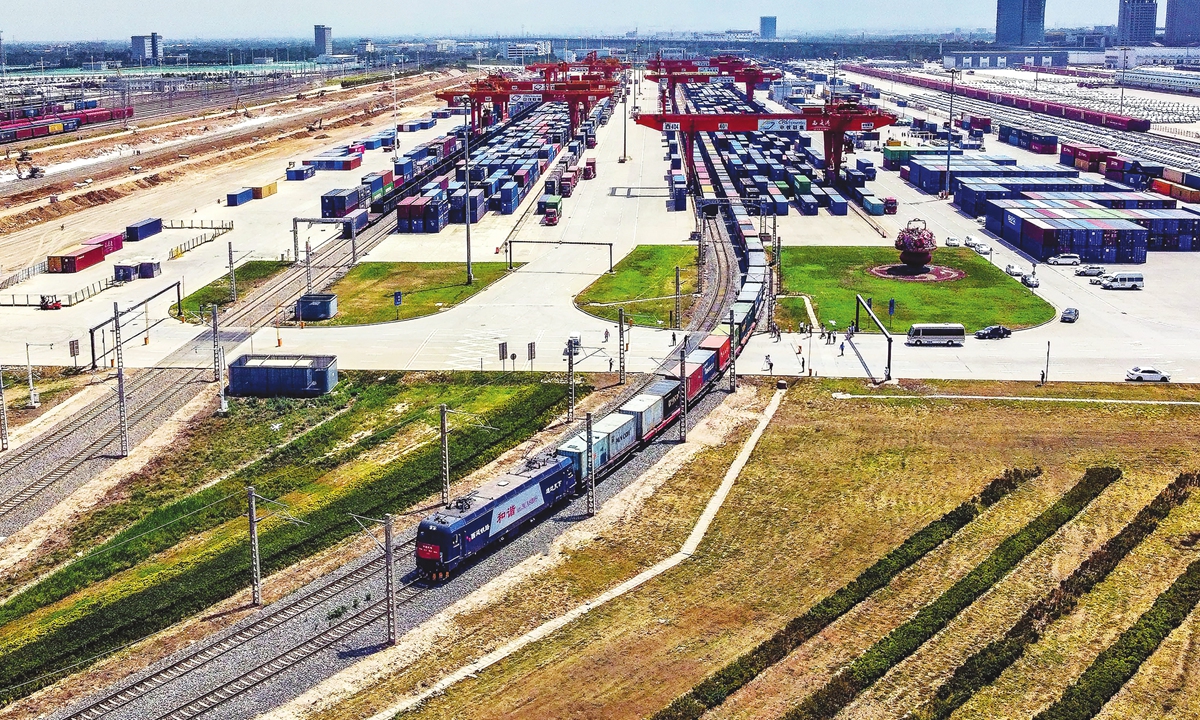
A China-Vietnam cargo train at Xi'an, Northwest China's Shaanxi Province Photo: VCG
As cargo trade between China and Vietnam has witnessed a rapid growth in recent years, the decision by the two neighboring countries to speed up railway connectivity is set to bring a tremendous lift to cross border as well as transit goods trade between the duo and countries beyond, said Chinese railway experts and industry insiders.Railway cargo trade between China and Vietnam had seen a rapid growth in the first 10 months of this year. A total of 607,000 tons of goods travelled across the border, up 58.6 percent year-on-year, said reports on Saturday, citing data released by customs authority in Nanning, South China's Guangxi Zhuang Autonomous Region.
In terms of value, the bilateral cargo trade grew by 1.5 times to 16.58 billion yuan ($2.33 billion) and the number of cross border train services expanded by 26.9 percent to 1,936.
The rapid trade growth came as China and Vietnam announced joint efforts to speed up the Lao Cai-Hanoi-Haiphong railway project in a November statement, which experts said signals an end to Vietnam's decades-long hesitation over whether it would be preferable to connect with China by using a standard-gauge railway system, which is different from the country's meter-gauge railway.
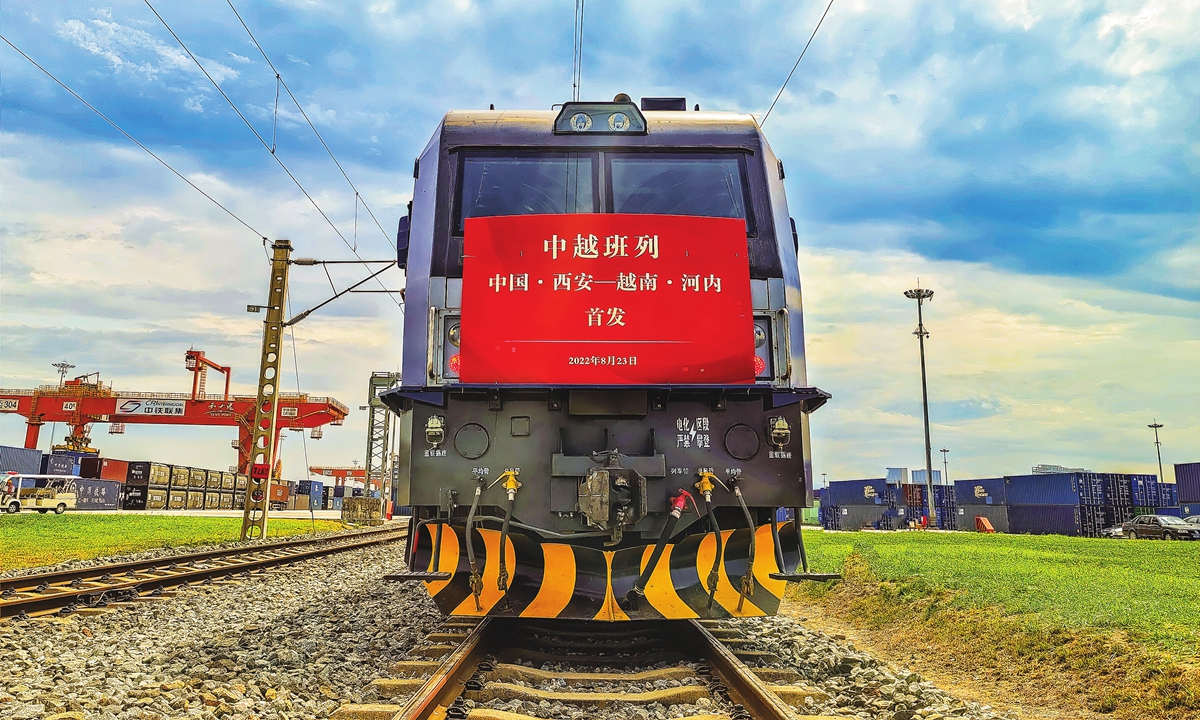
The first cargo train departs Xi'an in Northwest China's Shaanxi Province for Hanoi, capital of Vietnam on August 23, 2022. Photo: VCG
Huge potentialIn the two countries' joint statement on further strengthening and deepening the comprehensive strategic cooperative partnership, there are three references to decisions to push forward the railway, calling for the timely conclusion of the planning review of the Lao Cai-Hanoi-Haiphong standard-gauge railway, the discussion for the revision of the 1992 bilateral railway agreement and consensus for the connectivity plan at Vietnam's Lao Cai and Hekou on the Chinese side of the border.
To further increase cross border trade, a new rail link is a must and when the construction begins it will be a complete overhaul, an industry insider told the Global Times over the weekend. "The only question is when such a gigantic project will begin," said the person, who asked not be named as he is not authorized to speak to media.
"A meter-gauge railway could not handle enough cargo. Currently, the cargo handled by its railway is less than two percent and there is a huge potential in the railway transportation of Vietnam," the person said. "Having such a railway and even a North-South express railway linking Hanoi and Ho Chi Minh City would be a step in bolstering the country's rail freight."
Rapid economic development in Vietnam has also meant that the Vietnamese government has more resources at their disposal, according to experts.
"I think Vietnam won't go after the 80-120 kilometers per hour standard system. They will pursue some higher speed. As tunnels and bridges will need to be rebuilt to cater for the higher speed of the train," the insider said.
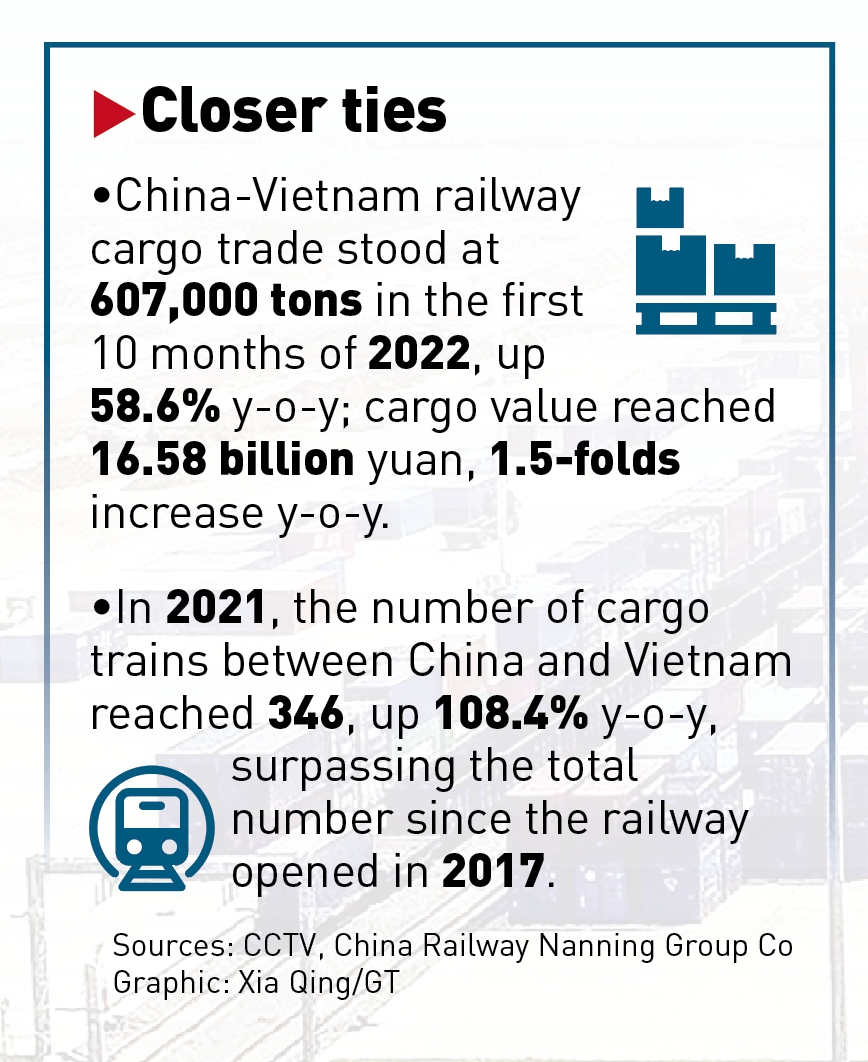
Graphic: Xia Qing/GT
Better connectivity in AsiaSun Zhang, a railway expert from the Shanghai Tongji University, told the Global Times on Sunday that the railway could become a passenger and cargo dual purpose railway with trains running at a maxim of 200 kilometers per hour based on the current need and developmental situation in the region.
"The solution is already proven technology in China," Sun said, noting that the railway will be able to ship e-commerce cargo produced both in China and Vietnam and for Vietnam the linkage means its goods will be connected with the broad Eurasia market and buyers there.
Experts said better railway connectivity will prove of great value to Vietnam, which has grown to be a key manufacturing hub for a wide range of goods in recent years.
In 2021, Vietnam was the 11th biggest exporter to the EU, with a 1.8 percent share of EU's imports.
Experts said efforts in bolstering connectivity between China and Vietnam will push the further development of the Trans-Asian railway (TAR), with the China-Laos Railway, the first leg of the international rail network, already demonstrating the potential of such rail connectivity.
The eastern route of the TAR could eventually connect China, Vietnam, Cambodia and Thailand, from where the railway continues to link up with Malaysia and Singapore, Sun said.
The new connectivity infrastructure, which will borne out of bilateral rail sector efforts, will also work in synergy with the Regional Comprehensive Economic Partnership (RCEP), the world's largest free trade pact. Many Vietnam fruits companies are already utilizing the trade facilitation brought by the RCEP to export local fruits to China. However, the difference in rail gauges between the two countries has reduced efficiency at border crossing.

